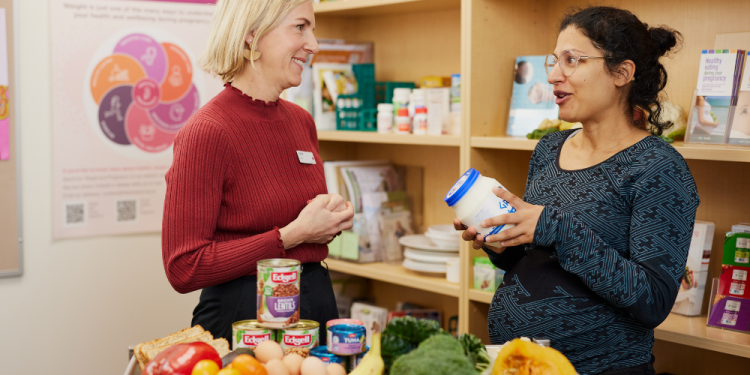
Food insecurity is a significant public health concern that affects over 13 per cent of Australians. It is also becoming more common due to the rising cost of living.
A person is food insecure when they lack access to enough safe and nutritious food for an active and healthy life. International evidence suggests that this public health concern has a significant impact on pregnant women and their offspring.
Yet little is known in Australia about the health impacts of food insecurity during pregnancy.
Lead researcher Julia Zinga, a dietitian at the Women’s, wanted to find out more about the experiences of food insecurity during pregnancy. Her research team asked a group of pregnant women experiencing food insecurity how they made their food choices; what their coping strategies were to manage food insecurity; and the social and economic factors that influenced their food choices.
Findings from the research show food insecurity during pregnancy is burdensome, relentless, and undermines women’s wellbeing.
The women in this study acknowledged the importance of eating well during pregnancy. Yet, they often defaulted to cheap, convenient and less nutritious food choices as a result of a limited food budget; pregnancy symptoms; cognitive overload associated with food insecurity; and the impact of the pandemic.
“The research presented here begins to highlight the challenges that food-insecure pregnant women face to make ends meet and how this influences their food choices, despite their awareness of the importance of a healthy diet,” Ms Zinga said.
“It indicates that food insecurity screening within routine antenatal care and subsequent supportive strategies are needed to deliver an equitable health response for this priority population group.”
More research is underway, to find out how pregnant women experiencing food insecurity wish to be supported, and how the antenatal health system can respond to this issue.
This research was published in the Maternal and Child Health Journal.